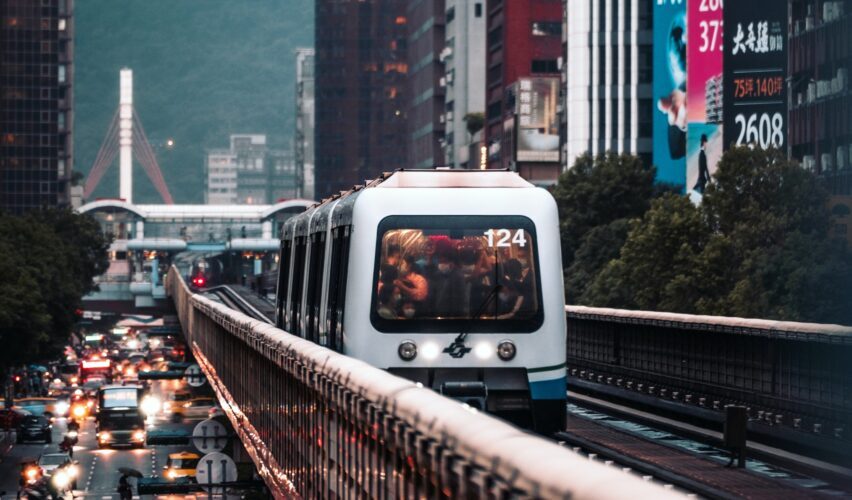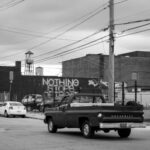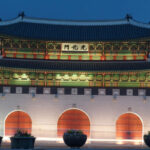In this third post of our series of articles on urban planning and thermodynamic flows, we are delving into the relationship between urbanism and energy. To do this, it is worth remembering how we got here.
In the first article of this series, on the alternative approach of trying to understand urbanism from thermodynamics, we established that from the point of view of physics, cities should not behave substantially differently from other complex material configurations. that we find in nature and that self-organize thanks to the moderate and cyclical contribution of energy.
Having established this new prism, in the second article we deal in more depth with the important issue of how urbanism apparently defies the tendency of entropy to increase. We analyze various interpretations of urban entropy and conclude that the creation of complex structures is compatible with a certain increase in the order of the system, at least in the stage of urban growth, and always at the cost of increasing entropy in the rest of the Universe.
Both articles inevitably leave an open question: if cities, like dunes or terrestrial and marine ecosystems, can self-organize without the intervention of top-down designers, what happens when someone else intervenes?
What can we do?
We have established that urban planning can be understood as the set of processes that deal with the use of the energy that reaches a city for its conversion into urban structure. These structures, in turn, correspond to possible states in which matter can organize itself in a more or less stable way (at least for a while). The organization of matter (be it the particles of inert objects or those of living organisms) into stable structures requires an energy input.
Biophysicist Jeremy England uses a very graphic metaphor: think of the distribution of particles in a system as a ball rolling from a peak (representing a low-entropy state) to a trough (representing a high-entropy state). If there were no obstacles or forces against it (such as, for example, a current of air), the natural path of the ball according to the arrow of time would lead it to end up at the bottom of the deepest valley, from where it would no longer move. This state corresponds to a maximum disorder in the system (e.g. a dead tree converted to humus).
It happens, however, that an adequate supply of energy can cause the particle distribution to organize itself into a stable structure (for example, the clay molecules of the bricks forming a wall driven by the energy of furnace, first, and of the mason, later), which would be equivalent to the “ball” being pushed up a side slope, falling into a small valley in height. The clay molecules can remain for a long time in this state “wall”, until little by little the “ball” also ends up sliding down that valley as the wall disintegrates due to weathering.
If these energetic dynamics occur both in inanimate objects (such as a clay brick wall), and in living beings, it is logical to think that they alsomust occur in that mixture of inanimate matter and living matter that are our cities.
A space of flows
Probably the sociologist and urbanist Manuel Castells was not thinking in physical terms when he suggested that a city is a physical manifestation of the flows of globalization. But, nevertheless, thinking of the city in terms of matter and energy fits perfectly with that interpretation. Whether it’s information, capital, merchandise, or people we are considerineg, the fact is that wherever the flows are most intense, that is where architecture manifests itself most powerfully.
This architecture, product of the set of processes encompassed under the term urbanism, is produced above all at the points where the energy meets matter, causing a discontinuity in the energy flow. For this reason, in that network of networks that is the city (it should always be remembered that every network has 3 elements: nodes, links and flows) the most interesting elements are the nodes. The other physical element of a network, the link, is not of much interest from an architectural point of view, although it is the main object of study in the engineering field.
To understand this interest in nodes versus links, just think about how the sun’s energy reaches the Earth. As the light travels down the link (in this case the interplanetary vacuum and then the atmosphere) it hardly hits anything, and so nothing of interest happens. It is when light hits the leaves of a plant, or heats a fluid, or hits the sown land, that the miracle of life occurs.
Engineering is interested in energy traveling down the link without dissipating heat. It is the logistical approach to urbanism.
On the other hand, architecture is interested in friction and discontinuity. Which, and through the heat generated, can trigger the construction of organized structures.
A thermodynamic approach to urban design
The two visions are complementary and necessary. It is advisable not to have cracks in the water pipes and that the subway arrives on time, fulfilling its function of efficiently transporting passengers. But, in the same way, shops at street level flourish in squares and pedestrian streets, so prone to friction and encounters. And the most innovative ideas arise from urban ecosystems in which spaces for interaction and friction between talent, knowledge and capital abound.
In a previous post I wrote that establishing a strong order in a city (equivalent to cooling down a system a lot) is expensive. This is equivalent to what happens in a refrigerator: the lower the temperature, the higher the consumption.
I also argued that a certain disorder in the city, to the extent that disorder contributes to the unexpected, was a desirable quality from the point of view of urban design. This idea broadly coincides with the entropic urbanism approach of Grávalos and Di Monte, and is consistent with Metcalfe’s Law, which regulates the value of the city as a social network. According to this law, the value of the city increases with the square of the number of connections created between its inhabitants, with the maximum social limit of a few hundred of them.
A circular urban design
In the same post I envisioned a possible and efficient way of doing urban design, redirecting the energy dissipated by the friction in the nodes towards the creation of new urban structures and services. Something similar to using the energy produced by the equipment in a gym to illuminate its rooms, or re-using braking energy to drive a motor, as the KERS system does.
Let’s analyze a station, which we can consider as a node in the metro network. The main flow in the interchange is the people who arrive through the interchanges (the tracks and, on them, the convoys). At the station, people come across a discontinuity: we have to get off the train to continue our journey by another means of transport (or by taking another train). At that moment, the people in the convoy, who are traveling in it in a highly organized state (and, hence, with low-entropy), become slightly disordered. Some wander in search of the exit, others entertain themselves to chat in a huddle, others stop at shop windows, and the luckiest ones will be hugging some relative or friend.
The optimization with which everything happened on the train gives way to a certain chaos that leads to an increase in entropy. And that’s where things get interesting and opportunities arise. The first of these is that the re-ordering of flows requires the creation of physical structures and, in our time, of digital services. The station building itself is an example of this, but within the structures necessary to order the flows we can consider simpler elements such as signage, or the navigation apps that many of us carry on our mobile phones: urban design is not just hardware, it can also be software. Again, bits and atoms.
We can turn the reasoning around. Disorganization, like that of a forest, does not need architecture. But when we cut down the forest, and cultivate fields in its place, farms, huts and, over time, homes, infrastructure and service buildings soon follow quite naturally.
Making cities energy-wise
This way of proceeding, which thus exposed seems like overwhelming common sense, is not always adopted in urban planning practice. On too many occasions, instead of promoting the traditional market square, where the exchange of goods and money spontaneously take place, shopping centers are set up on the outskirts, with the consequent extra cost in terms of energy, capital and time. We find a similar contradiction in many housing policies, which expel people from a more attractive center (in the double sense of gravitation and desire) to live in those suburbs “where nothing ever (or rarely) happens”.
It’s like installing wind turbines where the wind doesn’t blow. From the economic point of view, they are expensive and inefficient. In thermodynamic terms, we will say that these configurations will be unstable: they will decay sooner since they are not compatible with the top-down self-organization that matter initiates when it receives adequate energy (both in intensity and frequency).
However, when we talk about the energy that moves the city, it is convenient not to think only of electrons. Energy takes many forms, and not all of them are obvious. Fortunately, by scrutinizing the data produced by our digital footprint in the city, today there are techniques to locate these cyclical flows of energy that will improve the chances that urban projects are efficient, last, and take longer to begin to decline. We will see it more in depth in the next article.
Article published under Creative Commons free culture license. Some rights reserved.












